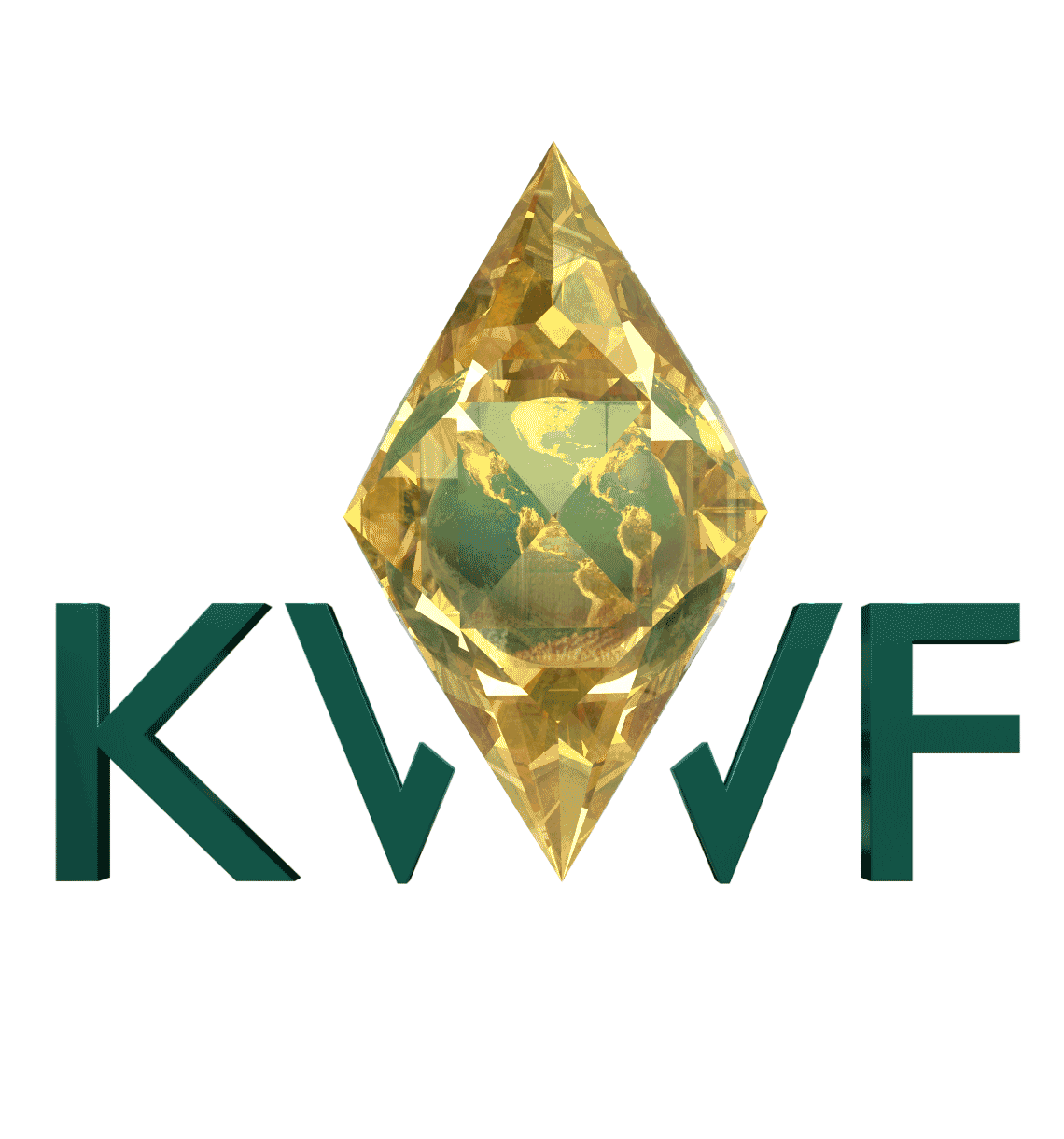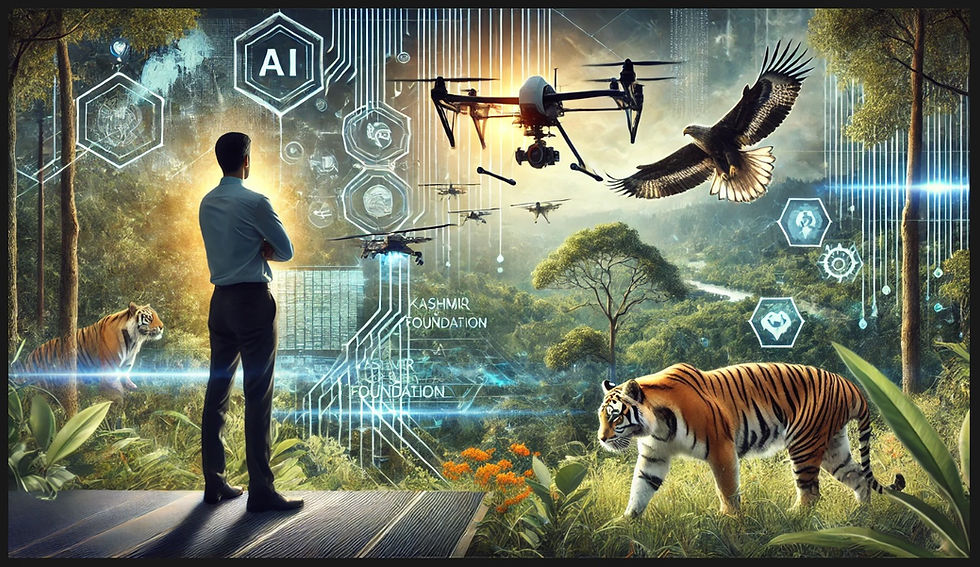Robotic Technology to Preserve Wildlife: A Scenario
- Kashmir World Foundation

- Feb 1, 2014
- 7 min read
Updated: Sep 19, 2022
by Princess Aliyah Pandolfi

A new flying robotics challenge takes aim at the armed groups that are hunting the black rhino and other animals out of existence.

As dusk descends on the Kruger National Park in South Africa, a family of black rhinos moves quietly away from the water hole toward a resting place in the bush. They are among the last of their kind, the species having been hunted to near extinction, and this evening they are not alone. A group of men has entered Kruger from neighboring Mozambique. They come from a poor village, but they carry expensive weapons. Two men carry AK-47 assault rifles to shoot park rangers, one carries a high-caliber rifle to shoot rhinos, and one carries an ax to cut off the horn of the dying animal.
Traffickers in the criminal network pay a reasonable price for the equipment and information, but it will be well worth the effort if they can kill a rhino. The horn is one of the most valuable materials on Earth, worth more than six times the value of gold on the streets of Vietnam and China, where it is believed to have great medicinal power. Criminal networks profit from that superstition, while environmentalists race to educate potential consumers about the fallacy of rhino horn medicine.
The horns are made from a material called keratin, which is about the same as human fingernails. In fact, simply eating your own nails would provide more keratin than a typical dose of rhino horn. Perhaps in a few generations, the demand for rhino horn will decrease, but unless the poaching ends, the rhinos will be gone in just a few years.
Stopping the poachers has been a losing proposition. In Kruger National Park, which is 7,580 square miles (a little smaller than the state of New Jersey), poachers have been relatively free to operate, despite the constant presence of rangers on foot and in-ground vehicles. Poachers are supported by a modern and well-funded intelligence network that includes human sources, signals intercepts, and aerial surveillance.
More than a thousand rhinos were poached throughout South Africa between January and December 2013—a dramatic rise over the past few years. Kruger National Park, the first reserve in South Africa, is the main battleground for the world’s rhinos, where more than 600 were lost in 2013. Experts blame the dramatic increase in affluent populations in Asia, where rhino horn has become a fashionable commodity, selling for as much as $100,000 per kilogram. With the demand increasing, organized crime syndicates have moved into the business of wildlife exploitation, estimated at $19 billion in black-market trade in 2012.
The Poachers Approach
The men travel on foot several miles into the park to a secluded area, where they will spend the day in hiding. With so few rhinos remaining, it can take several nights to cover the distance on the ground, and travel during daylight would be too risky. Poaching rhinos in South Africa is a severe crime, and a confrontation with rangers likely would turn into a dangerous gun battle. They are there to kill defenseless animals for profit, not engage in risky battles. They will take their time, approaching rhinos at night and hiding during the day, then escaping back into Mozambique under the darkness.

The following evening, the men proceed in earnest from their hidden camp. They received a coded text message via cell phone that rhinos had been spotted just a few miles from their location. Posing as tourists, spotters for the criminal network had provided timely and accurate intelligence. Travel on foot at night in Kruger can be slow, but the men are confident that they will have their kill. With better intelligence, weapons, and funding, the poachers have little fear of the rangers.
Fighting Technology with Technology
Poachers and rangers are not the only people in Kruger. Tourists flood the area, hoping to get a glimpse of rhinos and elephants before they are gone. Permits are issued by the rangers along with RFID tags that enable the rangers to keep track of where visitors are in the park at all times. Rangers also carry RFID tags so their locations are accessible back at park headquarters. Leveraging advanced technologies provides hope for protecting the park’s resident species.
Enter aerial drones. In 2013, Kashmir Robotics sponsored a Wildlife Conservation UAV Challenge (wcUAVc). The Challenge created a new class of aircraft with multimode sensing and onboard decision-making optimized for countering poaching in Kruger. Students, hobbyists, and academics worldwide formed teams to participate in the Challenge, not just for the $65,000 prize money but because they wanted to contribute to saving the rhino.
Kruger’s rangers had experimented with aircraft developed for other purposes, but affordable aircraft lacked the sensing, processing, and communications essential to the mission. On a battlefield, people are assumed to be combatants. Small aircraft can be deployed ahead of ground forces, alerting them to the presence of enemy soldiers. But in a park the size of Kruger, detecting poachers and planning engagements are complicated procedures.

Building on technologies developed for the smartphone industry, the Challenge teams integrated sensors, computers, and graphical processors into compact avionics. Drawing on revolutions in additive manufacturing, they compressed the time from concept to flight for prototype aircraft from years to days, and they decreased the cost for developing new small aircraft from millions to just a few thousand dollars.
Deploying the Drones
Back in the ranger headquarters, an alert is received from one of the new UAVs that are providing surveillance over the remaining rhinos. Humans have been observed via thermal imaging sensors within five miles of the rhino family. The aircraft received responses from the rhinos' RFID tags, but the humans detected no response.

The aircraft came down in altitude, passing quietly, low and slow over the subjects, probing with magnetic sensors able to detect the presence of weapons. On-board computers processed the infrared imagery and registered the locations and bearings of humans. The aircraft climbed back to cruise altitude and sent an encrypted alert via the park’s new IP Canopy that, although sparse at ground level, is continuous at aircraft-cruise altitudes.
An elite group of helicopter-borne rangers is called into action, but it will be at least an hour before they can engage the poachers. There are now less than two miles between the poachers and the rhinos. The aircraft is tasked with enforcing a buffer until the rangers can arrive.
Still unaware that they have been detected, the poachers continue moving toward a mother rhino and her baby. They are confident that within the next 30 minutes, they will have a kill. Above them, a Kashmir Robotics aircraft prepares to intervene. It plans an approach taking into account the locations of poachers and rhinos to ensure it drives them apart and not together.
Dropping down to just tens of feet above the ground, the aircraft quietly approaches the poachers. Close in, the aircraft turns on a bright strobe light, temporarily blinding the poachers. Believing they are under attack, the poachers respond with bursts of gunfire. But by the time they fire, the aircraft is gone, now rising back to cruise altitude. The aircraft processes the sound profile of the recorded gunshots and sends an alert describing the types of weapons and precise location.
On the ground, the poachers regroup. They are temporarily blinded and disoriented, anticipating ground fire from rangers. Instead of proceeding toward the rhinos, they begin retreating as best they can toward the border, now unsure of what may lie ahead.
Several more low-altitude passes of the aircraft with bursts of light keep the poachers from making their escape. The aircraft has herded them into an open area. Rangers arrive and quickly apprehend the now exhausted poachers, who are nearly out of ammunition.
Fact-Finding Mission
From November 16th to the 21st, I led a fact-finding mission into Kruger National Park to test some of these ideas for fighting poaching with drone technologies. We were able to take members of the wcUAVc leadership team deep into the battlefield during the full moon phase when the battle is most intense. Hosted by Major General (Ret.) Johan Jooste, Commander Special Projects SANParks, the team received a morning briefing on the battle plan; then, we provided a short demonstration of Skate, a small UAV developed by Aurora Flight Sciences in Manassas, Virginia, reconfigured to help rangers more effectively engage poachers. Within minutes, the Aurora team began training park rangers on how to launch, operate, and recover Skate. Impressed with the simplicity of operation and data quality, General Jooste requested that we bring Skate into the battle.

For several days and nights, the team traveled into remote regions of the park and introduced UAVs for the first time into the battle. Skate dove into a ravine from a remote army camp on a hill near the border of Mozambique, providing the first imagery of this high-risk area ever. From a sector camp deep in the park, Skate swooped low to provide imagery under a bridge where poachers pass during the night. The mission provided new insight into the battleground and how UAVs might be integrated into the operational plans.
The Challenge Ahead

The wcUAVc is by no means the first attempt at using drones to stop illegal poaching. In 2012, Google donated $5 million to the World Wildlife Federation to purchase surveillance aircraft for tracking poachers in Africa. The principal difference is that the wcUAVc encourages innovators and inventors worldwide to create new aircraft types with the latest sensors and computing technologies optimized for the mission. With more than a hundred teams from over 20 countries on six continents, the wcUAVc is the world’s largest and most diverse aircraft research project!
The future detailed in this scenario still needs to be created. Locally, nationally, and internationally, the wcUAVc is open to students, hobbyists, innovators, and entrepreneurs to create the best technology solutions to save endangered species from extinction.
About the Author
Princess Aliyah Pandolfi of Kashmir is the founder of wcUAVc and CEO of Al-Kareem Foundation (AKF). She created Kashmir-Robotics, a division of AKF, to provide the people of Africa with the means to protect rhinos and other endangered species from poaching. Learn more at www.wcuavc.com.





Comments